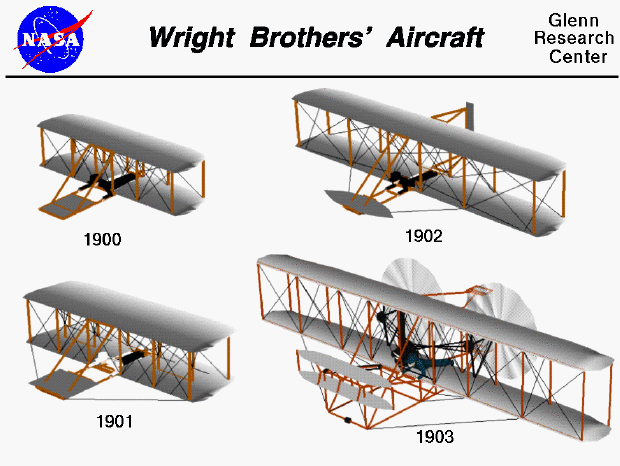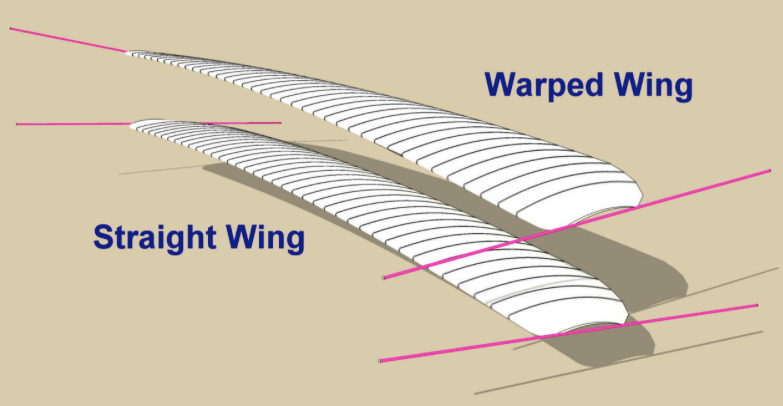The Conquest of the Sky - A Story of the Wright Borthers' Iterative Breakthrough

In the early 20th century, as Europe buzzed with the promise of technological advancement, two brothers embarked on a journey that would change the world forever. The story of Wilbur and Orville Wright is one of relentless innovation, fueled by the principles of iterative design - an approach that modern computer scientists and engineers might recognize as akin to agile development methodologies such as Scrum.
The Wright brothers’ journey began with a simple childhood observation: when you stick your hand out of a moving car’s window and tilt it, the air pushes it up or down. This basic interaction with aerodynamics sparked a revolutionary idea. By altering the angle of surfaces in the airstream, one could control flight. With this foundational concept in mind, the Wright brothers set out in 1899 to create a controllable flying machine.
1900 Glider
The first significant prototype in their quest was the 1900 glider. The brothers understood that controlling the aircraft would be the most challenging problem. While the principles of lift and propulsion were somewhat understood, control was largely unexplored. Their glider featured a horizontal elevator, or canard, positioned in front of the wings. This unique design aimed to maintain the glider’s center of pressure at its center of gravity, crucial for stable flight. The elevator could tilt to control ascent and descent, providing a rudimentary but effective mechanism for aerodynamic control.

1901 Glider
Despite their innovative design, the 1900 glider fell short of expectations. It provided less lift than anticipated. Determined to improve, the Wrights returned to Kitty Hawk, the town where the brothers tested flights with their first glider, with a larger glider in 1901, boasting a 7-meter wingspan. However, this too underperformed, achieving only one-third of the expected lift. This setback did not deter them; instead, it spurred further experimentation.
1902 Glider
The brothers’ willingness to challenge established norms and their commitment to empirical research set them apart. Initially, the brothers performed a literature study to find out the state of aeronautical knowledge, reading about the works of famous scientists and engineers at their time. For example, there was a lift equation that had been trusted for a century. However, their own experiments revealed many accepted theories were incorrect. So, to solve the problems they were facing, of which aircraft control was the most crucial and hardest, they had to come up with their own theories. One of the mechanisms they developed was their patented ‘wing-warping’ mechanism for control in roll (rotation around the front-to-back axis), which involved twisting the wings, literally twisting them, like how the wings of a bird are twisted:


They also tackled the issue of adverse yaw - where the nose moved oppositely during turns - by adding movable tails. All these modifications allowed for better stability and control during flight. With these mechanisms in place, in 1902, they introduced a new glider with a 10-meter wingspan, capable of controlled glides up to 90 meters.
The Leap to Powered Flight
1903 Flyer: The ultimate goal was powered flight. To achieve this, the Wright brothers needed propellers and a motor. Without an existing mathematical framework for propellers in aviation, they built a wind tunnel to develop their own theories. When they could not find a manufacturer to produce a suitable motor, they created one themselves. These efforts culminated in the 1903 Flyer, which on December 17, 1903, achieved the first powered flight, covering 36 meters in 12 seconds. This monumental event marked the birth of aviation.
A Legacy of Iterative Design
The Wright brothers’ meticulous testing and data-driven approach highlight their remarkable ingenuity as both scientists and engineers. They demonstrated that through iterative prototyping - building, testing, failing, and refining - extraordinary breakthroughs are possible. This process, fundamental to their success, is a principle that resonates profoundly in today’s era of rapid technological innovation.

Fast forward to the present, where technology pervades every aspect of our lives, the iterative process remains crucial. Einstein modestly said, “It’s not that I’m so smart, it’s just that I stay with problems longer.”, a quote with an underlying gravitas, ever crucial in the fast-paced, immediately rewarding world of today. It touches on the fundamental idea that it is iterative persistence that drives the continuous improvement of prototypes, leading to world-changing inventions that push humanity forward, unite us globally, and make the seemingly impossible possible.
References
[2] https://www1.grc.nasa.gov/beginners-guide-to-aeronautics/wing-warping-interactive/
[3] https://hackaday.com/2017/01/10/the-wright-flyer-engineering-and-iterating/

